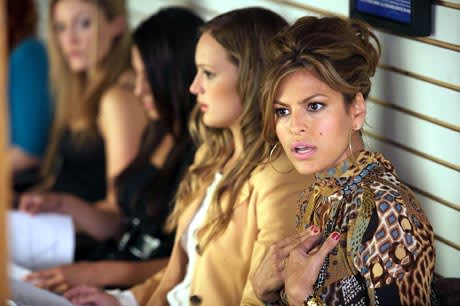As a montage of shoes "representing the characters about to be depicted graces the first few minutes of The Women, its clear that were in for trouble. Its an awkwardly obvious homage to Sex and the City, which its likely to stand deep in the shadow of. Both The Women and the Sex share basically the same concept: four successful New York womens relationships with themselves and each other are tested by various dramatic (and privileged) circumstances.
While Sex was certainly not devoid of problems, particularly in its tired plotlines, shallow characters and worshipping of materialism, at least it was fun. The Women not only extends Sexs problems but is also a joyless bore.
The Women is a remake of George Cukors 1939 classic of the same name. In development hell since 1996, it finally made it to the screen care of the only two women that stuck by it: writer/director Diane English and actress Meg Ryan. With Englishs career dead since Murphy Brown (which she created), and Ryan struggling to resist the direct-to-DVD bin, its not hard to see why. But they fail in achieving anything that might revive their careers, and bring a slew of usually capable actresses down with them.
Obviously sensing the problems, many actresses stayed away, so the new Women doesnt even come close to the Norma Shearer/Joan Crawford/Rosalind Russell triad. But somehow, Annette Bening signed on as Ryans best friend, Candice Bergen as her mother, Eva Mendes as her husbands mistress and Jada Pinkett Smith and Debra Messing as her other friends: a lesbian and a mother, respectively.
Like Cukors film, not a single male character graces the screen. Its an interesting concept, even 70 years later, but unfortunately English doesnt quite know how to update it. Sure, there are iPhones and the internet but the themes and narrative struggle to say anything, feeling dated and irrelevant.
One infuriating example comes in Pinkett Smiths Alex, for whom they double-dip the minority inclusion by having her be the only black and homosexual character. However, unlike the other main "women, Pinkett Smith doesnt even get a plotline. There are a few mentions of her struggling to write a second novel or dealing with an unruly girlfriend but nothing gets developed.
The other characters also use her homosexuality as an excuse for poorly written humour or mildly homophobic sentiment. They comment about how "theyre never letting Alex pick the restaurant again when Sapphic art is covering its walls, and often announce how they "accept her homosexuality as if they are being exceptionally tolerant.
The worst part about The Women is how it wastes a real opportunity to explore the homosocial, intergenerational relationships between these women. It could have been the thinking (wo)mans Sex and the City, finding a way to take the historical relevance of the 1939 version and translating it to today. Instead, The Women makes Sex look profound. And thats saying something.
(Alliance)While Sex was certainly not devoid of problems, particularly in its tired plotlines, shallow characters and worshipping of materialism, at least it was fun. The Women not only extends Sexs problems but is also a joyless bore.
The Women is a remake of George Cukors 1939 classic of the same name. In development hell since 1996, it finally made it to the screen care of the only two women that stuck by it: writer/director Diane English and actress Meg Ryan. With Englishs career dead since Murphy Brown (which she created), and Ryan struggling to resist the direct-to-DVD bin, its not hard to see why. But they fail in achieving anything that might revive their careers, and bring a slew of usually capable actresses down with them.
Obviously sensing the problems, many actresses stayed away, so the new Women doesnt even come close to the Norma Shearer/Joan Crawford/Rosalind Russell triad. But somehow, Annette Bening signed on as Ryans best friend, Candice Bergen as her mother, Eva Mendes as her husbands mistress and Jada Pinkett Smith and Debra Messing as her other friends: a lesbian and a mother, respectively.
Like Cukors film, not a single male character graces the screen. Its an interesting concept, even 70 years later, but unfortunately English doesnt quite know how to update it. Sure, there are iPhones and the internet but the themes and narrative struggle to say anything, feeling dated and irrelevant.
One infuriating example comes in Pinkett Smiths Alex, for whom they double-dip the minority inclusion by having her be the only black and homosexual character. However, unlike the other main "women, Pinkett Smith doesnt even get a plotline. There are a few mentions of her struggling to write a second novel or dealing with an unruly girlfriend but nothing gets developed.
The other characters also use her homosexuality as an excuse for poorly written humour or mildly homophobic sentiment. They comment about how "theyre never letting Alex pick the restaurant again when Sapphic art is covering its walls, and often announce how they "accept her homosexuality as if they are being exceptionally tolerant.
The worst part about The Women is how it wastes a real opportunity to explore the homosocial, intergenerational relationships between these women. It could have been the thinking (wo)mans Sex and the City, finding a way to take the historical relevance of the 1939 version and translating it to today. Instead, The Women makes Sex look profound. And thats saying something.
